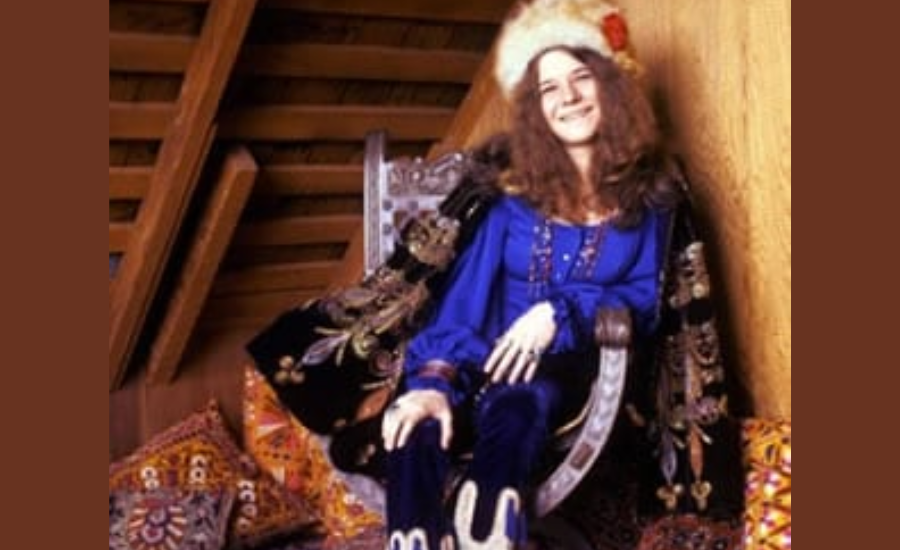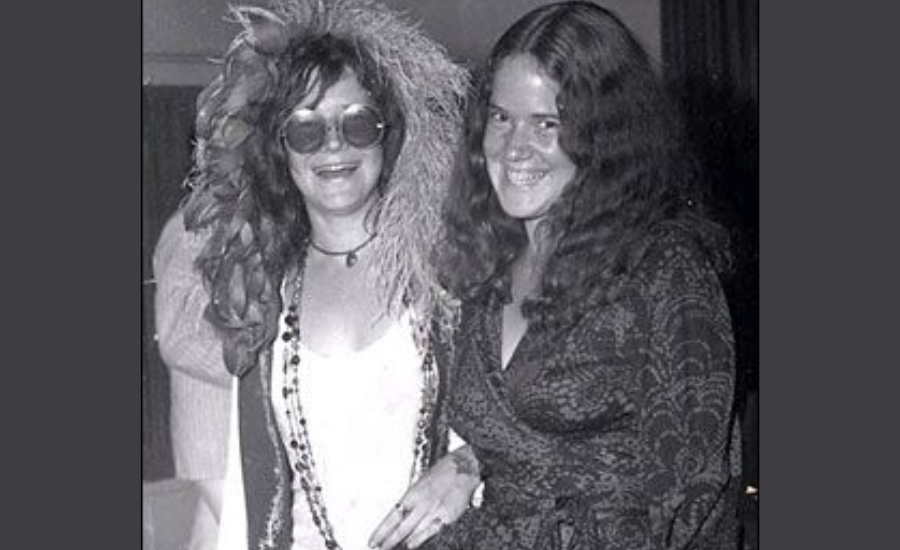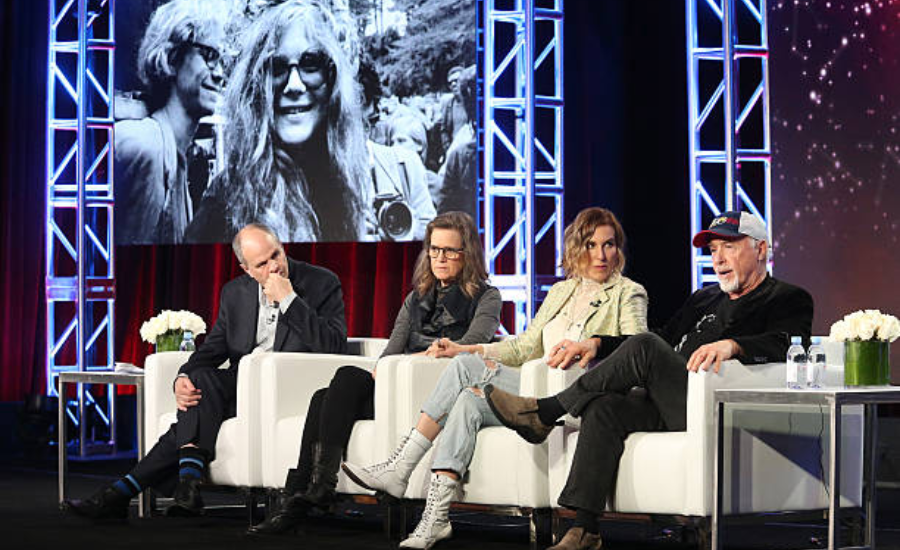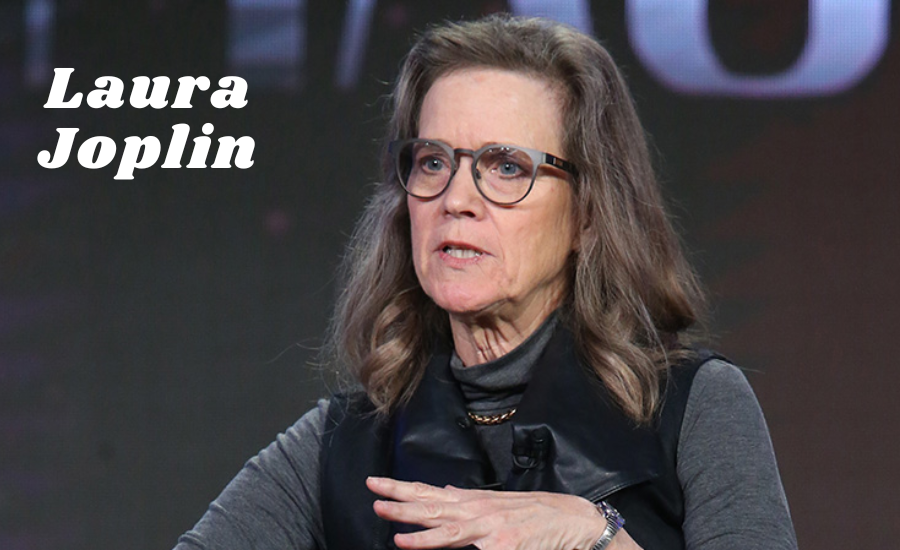Laura Joplin, Ph.D., is a multifaceted individual with a passion for storytelling and education. As an author and educator, Laura has left her mark in various arenas, including academia and corporate coaching. Her expertise in developing training programs for college faculty garnered support from none other than the U.S. Department of Education.
Beyond the classroom, Laura has delved into the realm of executive coaching, lending her insights to professionals at Western Management Corporation in Denver, CO. But her journey doesn’t stop there; she’s also deeply involved in coordinating the Estate of her sister, the legendary Janis Joplin.
A Sister’s Love: Laura’s Intimate Connection with Janis Joplin

Laura’s connection with Janis runs deep. While Janis was making waves in San Francisco as one of the iconic voices of the ’60s, Laura, six years her junior, remained a steadfast admirer. Their bond was evident in the letters Janis penned to her family, particularly Laura, who cherished them dearly.
In 2005, Laura immortalized these heartfelt exchanges in her book “Dear Janis,” which not only captured the essence of their relationship but also served as the foundation for the compelling documentary “Janis: Little Girl Blue.” In the documentary, Laura’s poignant recollections are brought to life through the voice of indie rock sensation Chan Marshall, better known as Cat Power.
This insight into Laura’s world dates back to 1998 when she shared her experiences with Ben Manilla Productions in an interview that provided a glimpse into her fascinating journey. Today, Laura continues to inspire from her base in Northern California, leaving an indelible mark wherever she goes.
Did You Have a Close Relationship with Janis While Growing Up?
Janis was six years my senior, but despite the age gap, she embraced the role of a big sister wholeheartedly. Our neighborhood was buzzing with activity, with kids running around playing games like chase and hide-and-seek. Janis had this knack for making everyone feel welcome and included, especially us younger siblings. She took us under her wing, showing us the ropes of playtime and always looking out for us.
Watch: SPEECH – Laura Joplin on her sister’s memory at Janis Jop…, Shared by| SuperPopVIP
Janis was more than just an older sibling; she was nurturing, and caring, and made sure we felt like an essential part of the gang. Whether it was joining in the fun or taking care of us, she was always there, making our childhood days filled with laughter and love.
Did You, Michael, and Janis Spend a Lot of Time Together Around Town?

Well, you see, there was quite an age gap between Janis and Micheal. She was a whole decade older than him, which is significant, especially in childhood. While I was six years younger than Janis, she was already off to college by the time I entered junior high. With such age differences, there were limitations to how much we could pal around together. However, when we were kids, we enjoyed playing around the neighborhood, whether it was games like a ball or just goofing off. Of course, as Janis grew into her teenage years, her interests evolved, and she became less interested in the simple games we used to play.
As someone who was six years younger than Janis, did you see her as a role model?
I looked up to Janis like she was the coolest person on the planet. To me, she seemed flawless, and I wanted to be just like her. I mimicked everything she did— from her drawings to her guitar playing, even the books she chose to read. In many ways, she was like a guiding light, showing me how to navigate life as a kid, and teaching me to be groovy and passionate about things. She was always there for me until the time came for her to leave home after high school and head off to college.
How did you feel when Janis left home for college?

Janis heading off to college stirred up a whirlwind of emotions for me. On one hand, it was devastating to see her go. I mean, who did she think she was, gallivanting off to explore the world while I was left behind? But as much as it hurt, I understood that we were growing up and taking different paths. While I was immersing myself in the marching band scene, Janis was diving headfirst into the blues music scene down in Los Angeles. Our life experiences couldn’t have been more different at that point, and that’s just the natural course of life, I guess.
It was a relief when Janis returned home in 1965. She seemed more settled, less of the rebellious teenager she once was. Janis was focused on her studies, majoring in social work, and trying to find her footing again after struggling with issues like substance abuse. She referred to this period as living in the “middle road,” seeking a balance between her past struggles and a more stable future. Music took a backseat during this time, as she associated it with her past drug use, which frightened her.
Before Janis Left for California, She Was Already Exploring the Music Scene in Texas.

In high school, Janis surrounded herself with a crowd that was hungry for all kinds of music. They’d venture out to jazz gigs and soak in the sounds of folk and black music. Growing up in a racially segregated town, Janis and her friends were intellectually curious and sought to understand the African-American experience. They devoured beatnik literature, immersed themselves in jazz, and embraced folk blues. Janis was particularly drawn to artists like Leadbelly, Billie Holiday, Bessie Smith, and Odetta, whose soulful voices captivated her.
As a budding artist herself, Janis explored painting, inspired by the works of Modigliani and other artists with African-inspired motifs. But it was her discovery of her singing talent that truly ignited her passion. One night, while singing with friends, she realized she could channel the spirit of Odetta through her voice—a revelation that filled her with excitement and awe.
Janis began performing locally, experimenting with her voice and accompanying herself on instruments like the autoharp and guitar. She sang at clubs and coffeehouses, riding the wave of the hootenanny craze that swept through the folk scene. Her journey took her to Austin, Texas, where she enchanted audiences at the University of Texas student union and Threadgill’s bar.
Even as she pursued music, Janis grappled with the shadow of drug use looming over the music scene. It was a concern she discussed with her friend Jim Langdon, a music critic, who reassured her that music and drugs weren’t inseparable companions.
In 1966, after a year free from drugs and feeling more centered in her life, Janis made the bold decision to venture to San Francisco. There, she hoped to explore the vibrant music scene and join forces with Big Brother & the Holding Company, a band in search of a vocalist. It was a pivotal moment for Janis—a leap of faith into a world where her voice could truly soar.
How Did Everyone Feel in the House About Janis Leaving to Pursue Music?

Janis left home in 1966 to pursue a singing career with a mix of trepidation and understanding. Janis planned to use the summer break to test the waters before returning to college. Perhaps because she had previously discussed her California troubles, she kept her departure plans hidden until she wrote to our parents. Both Janis and they concerned. Parental love and safety drove their concerns about Janis’ lifestyle, even though they didn’t agree.
Janis had a remarkable talent for writing letters. She had a way of weaving humor, intellect, and vivid descriptions that drew you into her world. So when she invited us out to visit her, we couldn’t resist. The following summer, during what became known as the “Summer of Love,” our family made the journey to San Francisco. We roamed through Golden Gate Park, danced the night away at the Avalon, and strolled down Haight Street, where Janis was met with adoring fans clamoring for her autograph.
It was an exhilarating experience for Janis, and for us too. My brother and I like to joke that we were part of the Summer of Love, although we were probably the only ones who came with our parents. But despite the unconventional circumstances, it was a journey filled with unforgettable moments and a deeper understanding of Janis’ world.
Janis Joplin: Leading the Way for Empowerment and Freedom
Yes, we had the chance to see the band perform, and it was quite an experience. They performed a special guest set for us that was unlike anything I had seen at campus parties.
In a dark room, people were dancing, swaying, and listening to the loud, powerful music that appeared to rock the building. The audience was almost in a trance, captivated by the raw energy emanating from the stage.
As for seeing Janis up there, it was a mix of pride and awe. Despite the intensity of the music and the unconventional scene, she commanded the stage with a confidence and passion that was truly inspiring. It was clear that she was in her element, pouring her heart and soul into every note she sang.
Reflecting on what Janis stood for, especially for women during that era, she was a trailblazer. In the 1960s, she challenged traditional notions of femininity and gender roles, advocating for authenticity and self-expression above all else. She often emphasized the importance of staying true to oneself, recognizing that it’s our individuality that defines us.
Janis empowered women by breaking down boundaries and encouraging them to be themselves and follow their ambitions. She inspired many to find their voice and create their own identities by showing that it’s good to defy society and follow your dreams. She gave women the chance to make their mark, creating a legacy of empowerment and liberation.
How did you feel when you learned about Janis jobli passing?

I was in grad school down in Dallas at the time, and it hit me like a ton of bricks. The news of Janis’ death was this surreal blend of personal grief and the strange sensation of it being broadcast for all to hear. Walking around campus, overhearing people discuss it in passing as if it were just another news tidbit was incredibly unsettling. On a larger scale, it was just overwhelming. I struggled to wrap my head around it. It was uncharted territory for me, and I had no frame of reference to process such profound loss.
Meanwhile, our parents rushed to take care of the arrangements surrounding Janis’ passing. My brother was back home in Port Arthur, while I was miles away in Dallas. Looking back, I think Janis’ death exposed the fault lines in our family dynamics. We didn’t grieve together or hold a traditional funeral or wake. Instead, we each internalized our sorrow, burying it deep within ourselves because we simply didn’t know how to confront it.
For years, I carried that grief like a weight, keeping it locked away in the depths of my heart. It wasn’t until much later that I found the courage to confront it head-on. The cathartic experience of opening my emotions allowed me to finally appreciate Janis’ music and cherish her memory without being overwhelmed by grief and discomfort whenever her name came up. My road toward acceptance and liberation allowed me to recognize Janis for who she was and her impact on the world.
Do you have a favorite among Janis’ recordings?
I love so many of Janis’ songs, but “Mercedes Benz.” That song embodies her irreverent humor and love for life. Janis was always a blast; her contagious energy and wicked sense of humor could brighten up any room. She sang about grief and misery in the blues, but always with joy and fun.
Now listening to her songs, it’s funny how I often start with this analytical mindset, questioning the recording or her voice. But before I know it, I’m engulfed in the music, screaming the lyrics. Janis’ music is ageless and has a deep, visceral impact. So when I hear “Mercedes Benz” or any of her songs, it’s like returning to those carefree, wonderful moments with her.
Why do you think Janis Joplin’s music still connects with people today, years after her passing?
It’s a question I’ve often pondered myself—what is it about Janis that continues to captivate and connect with audiences across generations? As I read through fan letters and speak to people who were touched by her music, a common thread emerges.
Many express sentiments like, “I never met Janis” or “I never saw her perform live,” yet they feel a profound sense of connection to her. They say, “But she knew me.” And I think that’s the crux of it—Janis had this remarkable ability to tap into the universal human experience and articulate emotions in a way that resonated with people on a deeply personal level.
For Janis, music wasn’t just about melodies and lyrics; it was about raw, honest emotion. She poured her heart and soul into every performance, channeling her joys, struggles, and vulnerabilities into her music. In doing so, she gave voice to feelings that many couldn’t quite articulate themselves.
She still sings with a genuineness that transcends time and trends. In her music, Janis conveys the complexity of human emotions, providing comfort, validation, and understanding. She left us a legacy to remind us that we’re not alone and that music can connect, heal, and empower us.
What’s Janis Joplin’s legacy, and how will it shape the world in 50 years?
Janis once said that she wants her music to be remembered as beautiful music, a universal language that talks to the soul, regardless of race. Her music still resonates with people from all walks of life, therefore she achieved that. Her sincere and real art allows her to connect with listeners so deeply.
Janis’ legacy goes beyond music. She’s remembered for her bravery, resistance to social standards, and fearlessness on and off stage. She pioneered change and inspired others to break free from civilization.
In essence, she’s a symbol of empowerment and liberation—a reminder to reject limitations and embrace our true selves. It advocates living truthfully, pursuing our passions openly, and never compromising our integrity for conformity.
I think Janis’ legacy will be one of individualism, daring, and self-expression after 50 years. Her music will inspire future generations, and her fearlessness will guide those who resist convention and make their way. Janis Joplin died too soon, but her art and unyielding conviction in self-expression continue to inspire.
Fascinating Facts About Laura Joplin

- Laura Joplin holds a Ph.D. and is recognized as an author and educator.
- She received support from the U.S. Department of Education for her training programs for college faculty.
- Laura worked as an Executive Coach for Western Management Corporation in Denver, CO.
- Currently, she is involved in coordinating the Estate of her sister, Janis Joplin.
- Her biography, “Love, Janis,” inspired a successful Off-Broadway stage play of the same name.
- Laura is based in Northern California.
- She collected and preserved letters from Janis, forming the basis of her book “Dear Janis” and the documentary “Janis: Little Girl Blue.”
- Laura shared insights about her experiences with Ben Manilla Productions in 1998.
- Janis Joplin’s departure for California marked a turning point in her musical career, with Laura providing valuable context about Janis’ early music ventures.
- Laura reflected on the impact and legacy of Janis Joplin’s music, emphasizing her sister’s ability to connect with people through her music
People Also ask (FAQs)
1. Who inherited Janis Joplin’s fortune?
Janis Joplin’s fortune and royalties were distributed according to her will. Celebrity Net Worth reported that her will stipulated her parents would receive half of her fortune, while each of her siblings would receive a quarter.
2. Who was Janis Joplin in love with?
In a memoir titled “I Ran Into Some Trouble,” Peggy Caserta, Janis Joplin’s lover, reminisces about their time together in Haight-Ashbury, detailing her struggles with heroin addiction and her journey toward sobriety in later years. A photograph from October 1970 captures the rock singer Janis Joplin.
3. Did Janis Joplin have a child?
No, Janis Joplin did not have any children. Renowned for her influential singing and songwriting, she left behind a lasting legacy in the music industry. Janis Joplin passed away on October 4, 1970, at the age of 27.
4. Are Janis Joplin’s siblings still alive?
Janis Joplin’s younger siblings, Laura (67) and Michael (64), are both alive. They are associated with presenting an ACT show and recently shared insights about their late sister with The Chronicle. Janis Joplin’s final residence was on Shady Lane in Larkspur.
Let’s Wind up
Laura Joplin, a distinguished author and educator, has made significant contributions to the literary and educational fields. She designed college faculty training programs and was an Executive Coach for Western Management Corporation in Denver, CO, with U.S. Department of Education support. Laura oversees her sister Janis Joplin’s estate.
Her biography, “Love, Janis,” spawned a hit Off-Broadway show and illuminated Janis Joplin’s personal life. Besides writing, Laura preserves and shares her sister’s legacy in Northern California. In her book “Dear Janis” and the documentary “Janis: Little Girl Blue,” Laura uses their communication to reveal Janis’s life. Laura also sheds light on Janis’s early music in Ben Manilla Productions interviews. Laura Joplin’s art honors and celebrates Janis Joplin’s legacy, preserving her sister’s influence on music and culture.
Stay Tuned for more updates and alerts visit Reader!
